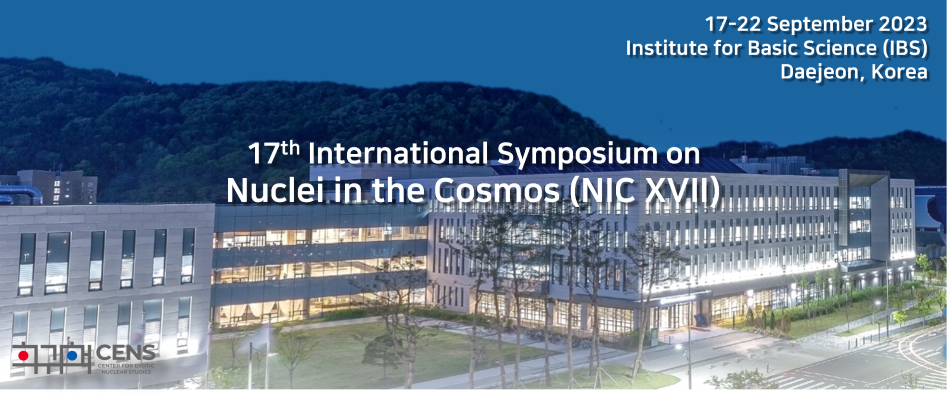Speaker
Description
Although about 90$\%$ and 50$\%$ of the solar-system Cu and Zn abundances are presumed to originate from the slow neutron-capture process (weak $\textit{s}$-process) during core He and shell C burning in massive stars, their stellar conditions are still poor known. This is because $^{63}$Ni (t$_{1/2}$=101.2$\pm$1.5yr) takes the key as a bottleneck for the synthesis of these nuclei in the $\textit{s}$-process branching: At high temperature, the $\beta$-decays from the excited states make a remarkable contribution. On the other hand, at low temperature and high density, the bound-state $\beta$-decays are important for highly ionized atoms when the transition energy is small. For these reasons many shell model calculations using different Hamiltonians were devoted to calculate excited-state $\beta$-decays, and both excited- and bound-state $\beta$-decay effects were studied in gross theory [2]. The calculated half-lives are unfortunately different from one another. In order to assess the significance of these effects, we carry out, for the first time, the $\textit{s}$-process nucleosynthesis calculations using all nuclear models of $\beta$-decays in a 25$M_{\odot}$ star with solar metallicity [1].
Firstly, we study the competition between $^{63}$Ni($\beta^{-}\bar{\upsilon}$)$^{63}$Cu vs. $^{63}$Ni(n,$\gamma$)$^{64}$Ni by taking account of the both effects to clarify the main nuclear flow paths [1]. We find that $^{63}$Cu and $^{64}$Ni change by 7$\%$ in abundance, $^{64}$Zn changes by more than 20$\%$, $^{65}$Cu and $^{66-68}$Zn change by 6$\%$, and all the other stable nuclei A = 69 – 90 change systematically by 5$\%$ at the mass coordinate $M_{r}=2M_{\odot}$ before the onset of the core Si burning, which depends strongly on the nuclear models [2]. We, secondly, confirm that although the $\beta$-decay half-life of $^{63}$Ni$^{28+}$ changes by more than 35$\%$ at T = 0.3 GK due to the effect of bound-state $\beta$-decay, abundance change of stable nuclei proves to be less than 3$\%$ [1]. These new quantitative results show the significance of future experimental measurement of the excited-state $\beta$-decays, in particular of $^{63}$Ni, and the microscopic nuclear model calculations of both excited-state and bound-state $\beta$-decays.
[1] Xinxu Wang, B. Sun, D. Fang, Z. He, M. Kusakabe, T. Kajino, Z. Niu, et al. (2023), to be submitted.
[2] K. Takahashi, K. Yokoi, At. Data Nucl. Data Tables 36, 375 (1987).

